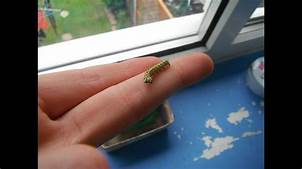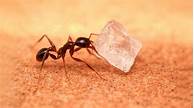Can You Keep a Caterpillar as a Pet?
Caterpillars are fascinating creatures that can make interesting pets. They are relatively easy to care for, and they can teach you a lot about the natural world. However, there are a few things you need to know before you decide to bring a caterpillar into your home.

What to Consider Before Getting a Caterpillar
1. Caterpillars Are Not Always Cute and Fuzzy.
Some caterpillars are covered in long, soft hairs, while others are smooth and bare. Some are bright and colorful, while others are drab and dull. Before you bring a caterpillar home, do some research to learn what it will look like as an adult. You might be surprised by what you find!
2. Caterpillars Eat a Lot.
Caterpillars are growing rapidly, so they need to eat a lot of food. The type of food that a caterpillar eats depends on the species. Some caterpillars eat leaves, while others eat flowers, fruits, or even other insects. Be prepared to provide your caterpillar with a steady supply of fresh food.
3. Caterpillars Poop a Lot.
Caterpillars produce a lot of waste, so you will need to clean their enclosure regularly. The frequency of cleaning will depend on the species of caterpillar and the size of its enclosure. Be prepared to clean the enclosure at least once a week, and more often if necessary.
4. Caterpillars Can Become Butterflies or Moths.
Most caterpillars eventually transform into butterflies or moths. This process is called metamorphosis. The length of time it takes for a caterpillar to transform varies depending on the species. Some caterpillars transform in just a few weeks, while others take months or even years. Be patient, and you will eventually be rewarded with a beautiful butterfly or moth.
How to Care for a Caterpillar
If you are prepared for the challenges of owning a caterpillar, then you can start to learn how to care for one. Here are a few tips:
1. Provide a Safe and Secure Enclosure.
Caterpillars need a safe and secure place to live. The enclosure should be large enough for the caterpillar to move around comfortably, and it should have a lid to prevent the caterpillar from escaping. The enclosure should also be well-ventilated to prevent the caterpillar from becoming too hot or too cold.
2. Provide Fresh Food and Water.
Caterpillars need a steady supply of fresh food and water. The type of food that a caterpillar eats depends on the species. Be sure to do some research to learn what your caterpillar likes to eat. You should also provide your caterpillar with a shallow dish of water so that it can drink.
3. Keep the Enclosure Clean.
Caterpillars produce a lot of waste, so you will need to clean their enclosure regularly. The frequency of cleaning will depend on the species of caterpillar and the size of its enclosure. Be prepared to clean the enclosure at least once a week, and more often if necessary.
4. Monitor the Caterpillar for Signs of Illness.
Caterpillars are susceptible to a number of diseases and parasites. If you notice any changes in your caterpillar's behavior or appearance, such as a loss of appetite, lethargy, or changes in skin color, you should contact a veterinarian immediately.
Conclusion
Caterpillars can make interesting and rewarding pets. However, it is important to do your research before you bring a caterpillar into your home. Be prepared to provide your caterpillar with a safe and secure environment, a steady supply of fresh food and water, and regular cleanings. With proper care, your caterpillar can thrive and eventually transform into a beautiful butterfly or moth.
Declaration: All article resources on this website, unless otherwise specified or labeled, are collected from online resources. If the content on this website infringes on the legitimate rights and interests of the original author, you can contact this website to delete it.





